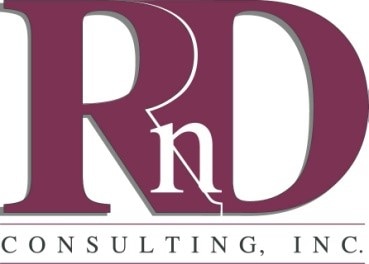| As tax season approaches, it is important for your business to pursue Research and Development tax credits. RnD Consulting provides the answers as to why you should do an R&D study, and how to properly document R&D expenditures. This is part two of a two part series about claiming research and development tax credits. The content has been prepared by RnD Consulting, one of our newest members, and experts in the R&D field. Read the first part of the series here. |
To claim your R&D credit, you simply need to provide four numbers on Form 6765 and the software does the math for you. Easy peasy! However, if you are ever asked to support your methodology or even just to be able to replicate that methodology for the next tax year, you’ll need a lot more detail.
No single piece of data provides adequate supports for the R&D credit so you must assemble a breadth of data that, taken together, provide sufficient support for your R&D credit methodology. Things as diverse as W-2’s, trial balances, invoices, interviews, contemporaneous documentation (including sketches, technical schematics, meeting minutes) organizational charts, employee surveys, emails, etc. are useful in building the case for your credit.
If you have a business to run, it is often helpful to have an expert come in to not only calculate the credit, but also to streamline the process, segregate relevant from irrelevant, build support sufficient to defend the methodology in case of a review and also to make a repeatable methodology so that the credit can be pursued in subsequent years and you have time to focus on your business.
How to document R&D activities and expenditures
To have a defendable R&D credit, you want to make sure that you are able to adequately answer the question(s) how did you arrive at that number? And, how did you determine that is qualified? There is always some interpretation involved, but most of your work should be easy to support.
First, identify what activities are qualified for R&D based on the definitions in §41. You’ll want to make sure you can adequately describe these activities in R&D terminology, know when the qualifying activity starts and stops and know that there is a project file that you can go to in order to support all of this.
Next, capture wages, spend on consumed supplies and contractor costs for those persons or activities. Finally, use activity-based accounting if it exists so that you can tie effort to a particular project. If that is not practical, you are allowed to make credible estimates that should involve worksheets that build the case to tie individuals’ efforts to activities. It is critical to make sure that this documentation is not only sufficient for support, but also organized and repeatable.
Please contact RnD Consulting to walk you through the circumstances of your business so that you are able to determine that your R&D credit strategy is not leaving money on the table.
| 630.258.498 | Bruce Kletsky is Vice President for RnD Consulting. In this role, he is responsible for business development and managing client relationships, in the area of federal and state tax credits and incentives; focusing on U S and international research and development tax credits (R & D). Kletsky is responsible to help corporations, and their CPA firms, qualify for this tax incentive, create a transparent experience, and identify solutions that will maximize this incentive. Kletsky has over 28 years of accomplishments in tax consulting, having worked for several national public accounting and tax consulting firms in similar positions of responsibility; representing over 450 corporations. Kletsky industry specialization and experience includes: manufacturing/contract manufacturing industry, tool & die, steel, biotech, oil & gas, apparel, food processing, engineering, chemical, software development, architectural and construction, and automotive suppliers. |



 RSS Feed
RSS Feed
